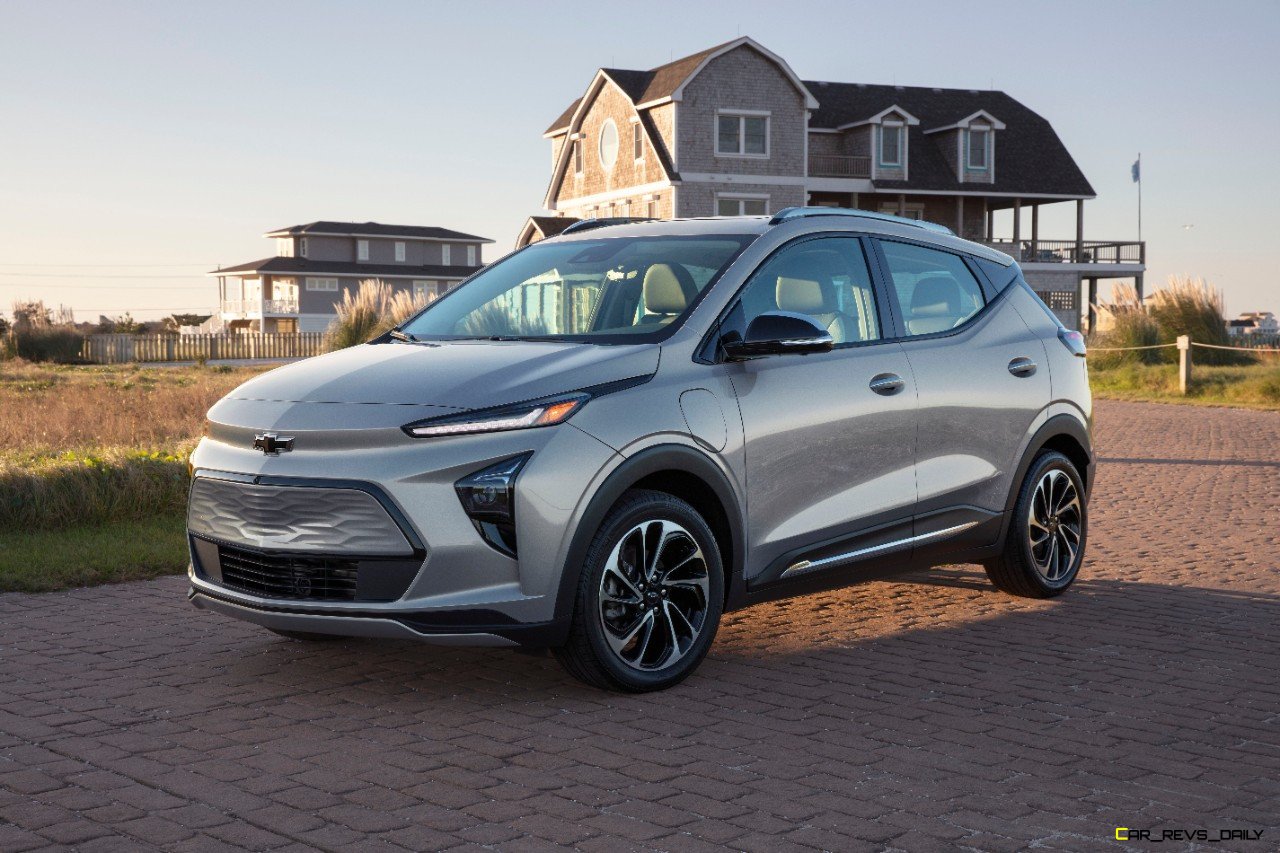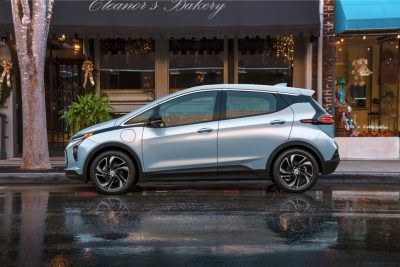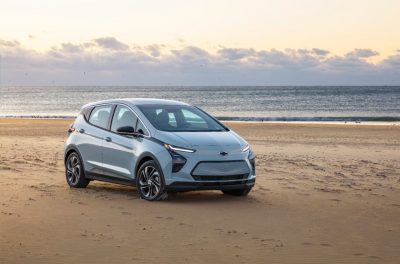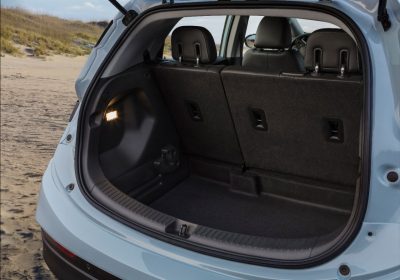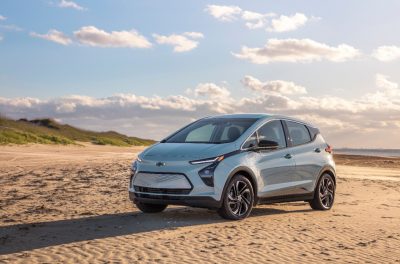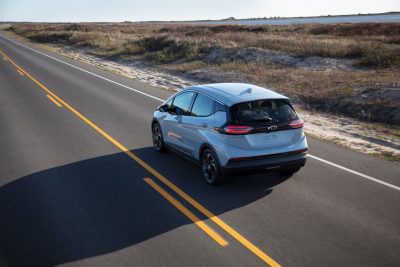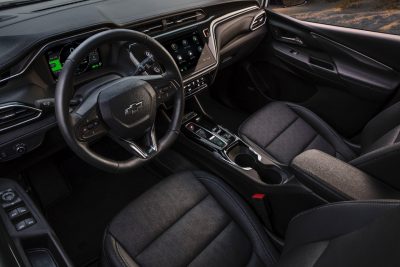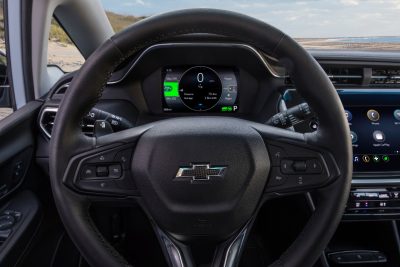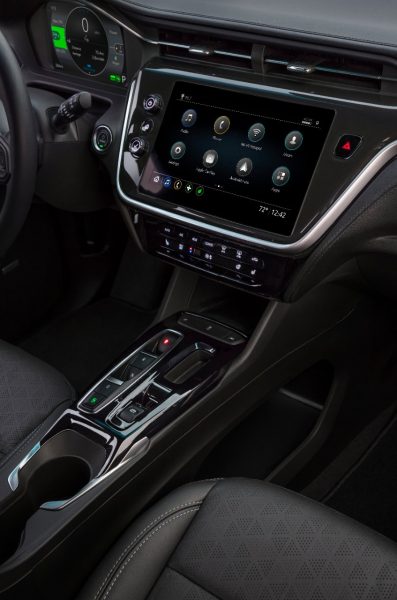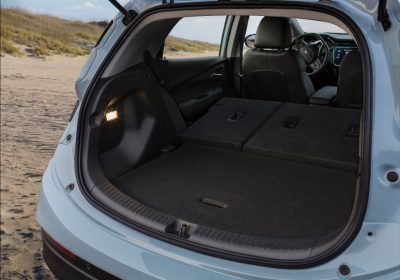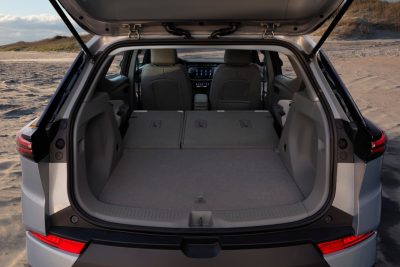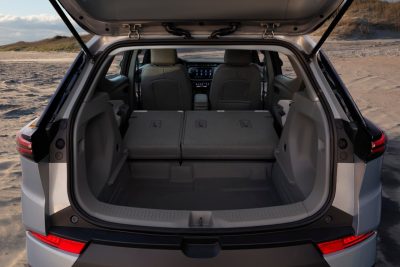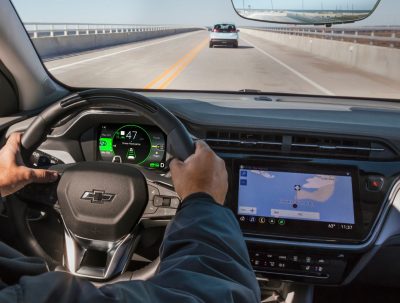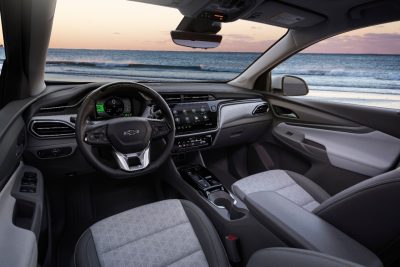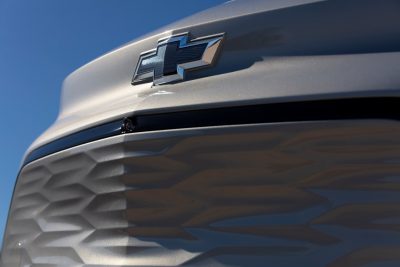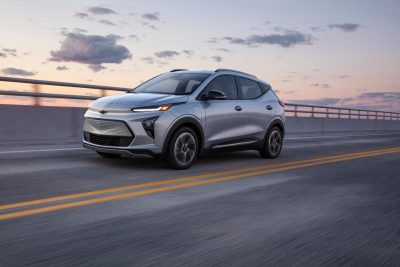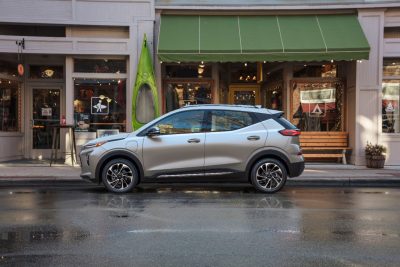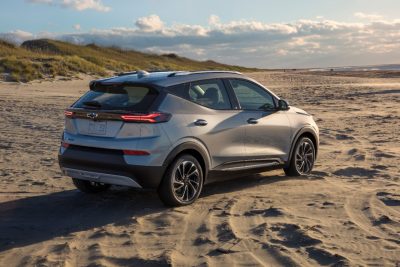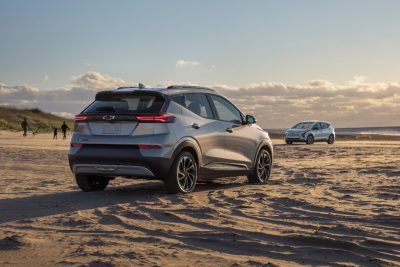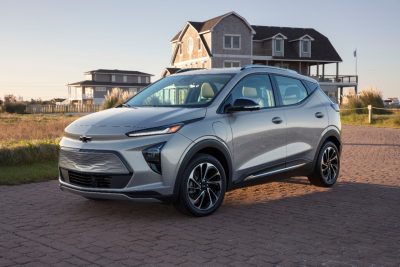It’s no secret that General Motors is committed to an all-electric future. The company fired the first big salvo when the Hummer EV made its virtual debut. The Hummer was just the beginning of GM’s Ultium battery-powered endeavor, with the Cadillac Lyriq and Celestiq also teased. However, the company knows that it needs to have offerings at the lower end of the pricing bracket to bring in more customers. That’s where the 2022 Chevrolet Bolt EUV and the redesigned Bolt EV models come into play.
No Ultium Here But Still Plenty To See
Before we go any further, we might as well address the giant elephant in the room and reveal that neither the Bolt nor the Bolt EUV will be powered by GM’s revolutionary Ultium battery technology. But Chevy reps are quick to point out that there’ still plenty to find here once you look past that minor aspect.
Chevrolet claims that both the Bolt and its EUV cousin share distinct exterior styling, with the Bolt EUV allegedly having a more SUV like shape. Those expecting an apple versus pear comparison will not find it here. Instead, think of the styling differences between the two as more along the lines of a Granny Smith Apple versus a Fuji breed one. Both models have slicker exterior styling, with the Bolt’s traditional-looking front grille being replaced with a new piece that’s bigger than before and is moved closer to the lower front bumper. New headlights are also part of the package, but the shape is otherwise carried over from the old model, with a refreshed rear fascia rounding out the changes. Chevrolet quickly pointed out that the two do not share any exterior panels, but we wish the styling was more distinct to help broadcast that fact better.
Move to the Bolt EUV, and the design mainly sticks to the same basic theme but with some elements being bigger to fit the EUV’s slightly longer proportions. For instance, the front fascia features larger housings for the DRL assemblies, while a distinct design line and swooping C-pillar leads the eye to the roof-mounted spoiler. The EUV’s increased size also comes into play at the rear, where a larger rear bumper meshes with the liftgate.
Fresh Design And New Technology Spearhead Bolt Lineup
The interior of the Bolt and the Bolt EUV reflect many of the things that Bolt owners wanted when Chevrolet designers asked them what they wanted in a next-generation model. Higher quality plastics and materials are splashed throughout both cabins, but subtle differences make themselves apparent when the two are placed side by side. We’ll touch more on them later, but buyers will notice several core things that the two have in common.
An all-new instrument cluster, for example, is used on both models, with an all-new 8-inch digital display being used. The steering wheel has also been redesigned and has a slightly flat bottomed design, and adds a new Regen on Demand paddle. A bigger 10.25 infotainment screen that integrates many traditional vehicle controls into it. As seen on some other recent GM models, the traditional shifter has been pitched with a new toggle and pull arrangement. The seats have also been redesigned and now incorporate a new triangular-shaped pattern and color contrast stitching. Chevrolet also revealed that the cushions have been reworked to provide better long-distance comfort.
As mentioned, some subtle differences split the two apart, and many of them are found in the Bolt EUV. The extra length of that model’s platform allows the EUV to have 3 extra inches of rear legroom, allowing rear occupants to stretch out and relish in the comfort provided by the heated seats. Front passengers benefit from heated and cooled seating, which further adds to the EUV’s sharper focus on premium motoring. As a bonus, a large sunroof is an optional extra that allows EUV occupants to get a view of the sky when eating up the miles.
Familiar Performance Hardware Now With Super Cruise Action
Neither model will come equipped with GM’s Ultium technology (Chevrolet claims the platform won’t allow it), but that doesn’t mean they will lack day to day performance. A 65 kWh lithium-ion battery pack help provide power to the single electric motor, which is good for 200 horsepower and 266 lb-ft of torque. The setup also allows the Bolt EV to be driven up to 259 miles on a single charge, but the heavier curb weight of the EUV causes that model’s range to dip slightly to 250 miles before it needs to be plugged back in. These figures allow the standard Bolt to retain the slight range advantage it has over rivals like the Kona EV and also allow the EUV to be in the thick of it, especially when compared to the Ford Mach-E.
Speaking of the Bolt EUV, it will also bring GM’s Super Cruise technology to Chevrolet for the first time. Once solely exclusive to Cadillac the technology has just now begun trickling to the company’s other brands and, at last, has finally made its way to Chevrolet. Unlike the newest iteration of Super Cruise that features automated lane changing, the Bolt EUV will instead come equipped with what could now be considered the standard version of the system. That particular iteration lacks the nifty lane change function but has other core Super Cruise goodies, including 200,000 miles of mapped roads to maximize hands-free driving.
As for charging, GM is using the Bolt and the Bolt EUV to launch an all-new Dual Level Charge cord. The novel cord aims to eliminate the need for customers to install separate home charging systems and is perhaps the first of its kind to make it into the broader mass market. The cord achieves this by using a changeable plug that allows consumers to plug into a standard 120-volt three-prong outlet for Level 1 charging and a 240-volt outlet for level 2 charging with a 7.2 kWh max limit. The cord is standard on the Bolt EUV, but Bolt buyers can only get it as a separate optional extra. Chevrolet was also quick to point out that both models are capable of 11 kW Level 2 charging, but buyers at that point will have to invest in separate equipment to help facilitate that particular feat.
2022 Bolt Value Quotient
Pricing for the 2022 Bolt lineup also reflects a major shift in Chevrolet’s marketing strategy, with the 2022 Bolt being $5,000 less expensive than the 2021 model. The revised figure of $31,995 is before any green-related incentives come into play, which could lower the price into the mid $20,000 range in certain situations.
“We’ve lowered Bolt EV’s base price by more than $5,000 from the 2021 model, proving our commitment to make EVs attainable for everyone,” added Steve Hill, Vice President for Chevrolet.
The Bolt EUV will start at $33,995, which is only a small bump up from the standard Bolt’s pricing. Like other new EV offerings, the Bolt EUV will also come with a first-year only Launch Edition that will have a base sticker of $43,395. Buyers willing to pay that extra bit more will get Super Cruise and unique wheels, badging, and a sunroof. The lone item that has us scratching our heads is the illuminated charging port. Many of its rivals offer that particular feature standard, and it’s rather interesting to see Chevy limit that handy nighttime feature to the Launch Edition (here’s hoping the rest of the family gets it eventually.)
Both the 2022 Chevrolet Bolt and the Bolt EUV will make their way to dealerships this summer, but buyers looking to pre-order the Bolt EUV launch edition can do so here at this link.

Carl Malek has been an automotive journalist for over 10 years. First starting out as a freelance photographer before making the transition to writing during college, his work has appeared on numerous automotive forums as well as websites such as Autoshopper.com.
Carl is also a big fan of British vehicles with the bulk of his devotion going to the Morgan Motor Company as well as offerings from Lotus, MG, and Caterham. When he is not writing about automobiles, Carl enjoys spending time with his family and friends in the Metro Detroit area, as well as spending time with his adorable pets.

